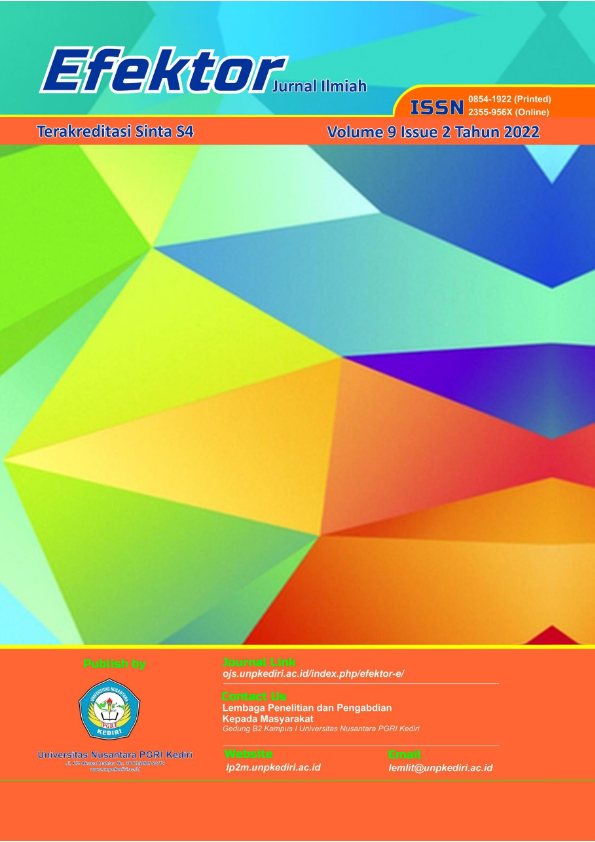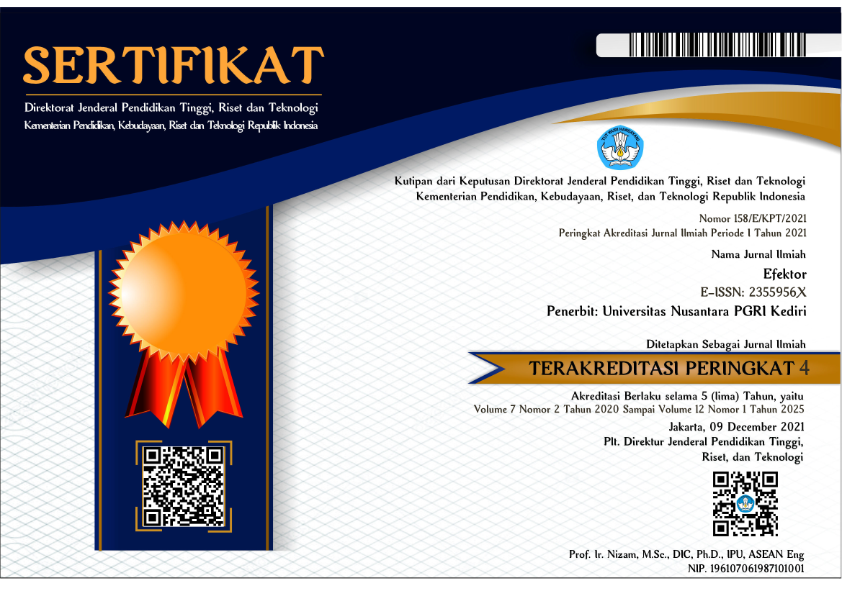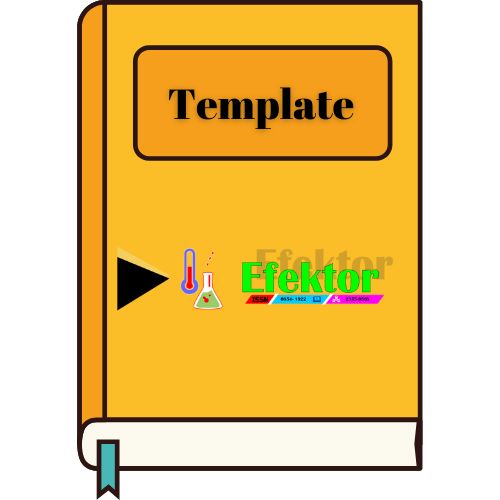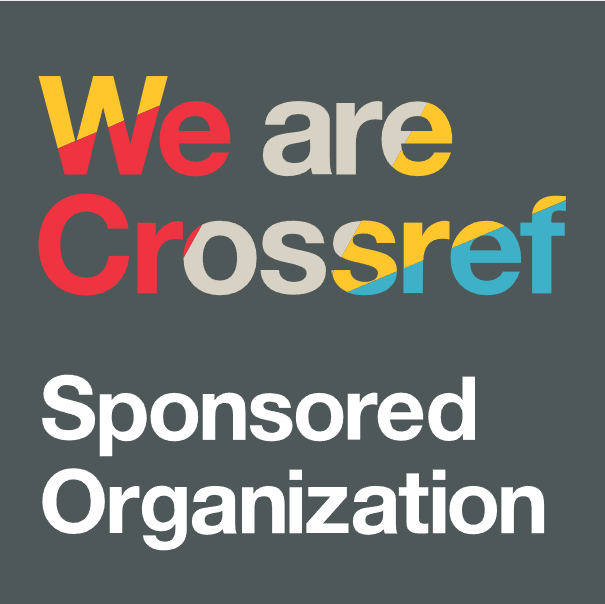Peran Departemen Sumber Daya Manusia dalam Perencanaan, Rekrutmen Dan Seleksi Untuk Mendapatkan SDM Unggul
DOI:
https://doi.org/10.29407/e.v9i2.17651Keywords:
Perencanaan SDM, Rekrutmen, Seleksi, SDM Unggul.Abstract
The purpose of this research is to analyze the role of human resources department in conducting HR planning, recruitment, and selection to meet the needs of the best employee. This study is literature review from related manpower planning, recruitment, and selection. The literatures were collected from 50 journal articles from 2000 to 2020. The results showed that the human resources department has a role in HR planning, recruit, and select the human resources needed. The results explain that the human resources department has a role in formulating and determining the HR planning, source of candidate, selection methods, and stages of selection. HR department has a role in the process of determining selection strategies based on company planning. The role of the HR department is very important in the process of acquiring superior HR with a mechanism or system to selection the best employee.
References
Adeola, M. M., & Adebiyi, S. O. (2017). Employee Motivation, Recruitment Practices and Banks Performance in Nigeria. International Journal of Entrepreneurial Knowledge, 4(2), 70–94. https://doi.org/10.1515/ijek-2016-0015
Aher, D., & Giri, G. . (2018). A study of recruitment and selection process with special reference to manufacturing industries in PIMPRI-CHINCHWAD MIDC. 4(1), 1–9. https://doi.org/10.16962/EAPJHRMOB/issn.
Ahmed, S., & Adams, A. (2010). Web Recruiting in Government Organizations. Public Performance & Management Review, 33(4), 653–670. https://doi.org/10.2753/pmr1530-9576330406
Anyim, F. C., Ekwoaba, J. O., & Anthony, I. D. (2012). The role of human resource planning in recruitment and selection process. British Journal of Humanities and Social Sciences, 6(August), 234–247.
Armstrong, M. (2014). A Handbook of Human Resource Management. Kogan Page Limited, 409–439.
Becker, B. E., & Huselid, M. A. (2006). Strategic human resources management: Where do we go from here? Journal of Management, 32(6), 898–925. https://doi.org/10.1177/0149206306293668
Bellionardi, A. R. K. (2013). MODEL ANALISIS PEREKRUTAN DAN SELEKSI KARYAWAN DI PT. SEMARANG AUTOCOMP MANUFACTURING INDONESIA (SAMI). MODEL ANALISIS PEREKRUTAN DAN SELEKSI KARYAWAN DI PT. SEMARANG AUTOCOMP MANUFACTURING INDONESIA (SAMI), 53(1), 1–22.
Boxall, P., & Purcell, J. (2011). Strategy and Human Resource Management: Third Edition (Management, Work and Organisations). In Palgrave Macmillan.
Brannick, M. T., Brannick, J. P., & Levine, E. L. (1992). Job analysis, personnel selection, and the ADA. Human Resource Management Review, 2(3), 171–182. https://doi.org/10.1016/1053-4822(92)90010-N
Campbell, D. (2012). Employee Selection as a Control System. Journal of Accounting Research, 50(4), 931–966. https://doi.org/10.1111/j.1475-679X.2012.00457.x
Dainty, A. R. J., Neale, R. H., & Bagilhole, B. M. (2000). Comparison of men’s and women’s careers in U.K. construction industry. Journal of Professional Issues in Engineering Education and Practice, 126(3), 110–115. https://doi.org/10.1061/(ASCE)1052-3928(2000)126:3(110)
Dessler, G., & Al Ariss, A. (2012). Human Resource Management.
DeVaro, J. (2016). Internal hiring or external recruitment? IZA World of Labor, 237–243. https://doi.org/10.15185/izawol.237.v2
Elvis Selase, A. (2018). The Impact of Recruitment and Selection Criteria on Organizational Performance. GN Bank, Greater Accra Region of Ghana as the Mirror. volume 8, 283–296. https://doi.org/10.5296/jpag.v8i3.13637
Farnham, D. (2010). Human resource management and its external contexts. Human Resource Management in Context, 1–571.
Gamage, A. S. (2014). Recruitment and Selection Practices in Manufacturing SMEs in Japan: An analysis of the link with business performance. Ruhuna Journal of Management and Finance, 1(1), 37–52.
George, V. (2019). The Role of Human Resource Planning in the Human Resource Network. International Journal of Creative Research Thoughts, August, 1–10.
Guest, D., & King, Z. (2004). Power, Innovation and Problem-Solving: The Personnel Managers’ Three Steps to Heaven? Journal of Management Studies, 41, 401–423. https://doi.org/10.1111/j.1467-6486.2004.00438.x
Harky, Y. F. M. (2018). The Significance of Recruitment and Selection on Organizational Performance: The Case of Private owned Organizations in Erbil, North of Iraq. International Journal of Contemporary Research and Review, 9(02), 393–401. https://doi.org/10.15520/ijcrr/2018/9/02/422
Hill, C. W. L., & Jones, G. R. (2007). Strategic management: An integrated approach. In Strategic Management An Integrated Approach.
Holm, A. B. (2012). E-recruitment: Towards an Ubiquitous Recruitment Process and Candidate Relationship Management. German Journal of Human Resource Management: Zeitschrift Für Personalforschung, 26(3), 241–259. https://doi.org/10.1177/239700221202600303
Hsu, Y. R., & Leat, M. (2000). A study of HRM and recruitment and selection policies and practices in Taiwan. International Journal of Human Resource Management, 11(2), 413–435. https://doi.org/10.1080/095851900339936
Hunger, D., & Thomas. L. Wheelen. (2004). Essentials of Strategic Project Management. International Journal of Project Management, 18(2), 93–103.
Jepsen, D. M., & Grob, S. (2015). Sustainability in Recruitment and Selection: Building a Framework of Practices. Journal of Education for Sustainable Development, 9(2), 160–178. https://doi.org/10.1177/0973408215588250
Kemensetneg, H. (2019). SDM Unggul Menjadi Prioritas Utama Jokowi. Kementrian Pendayagunaan Aparatur Negara Dan Reformasi Birokrasi. https://www.menpan.go.id/site/berita-terkini/dari-istana/sdm-unggul-menjadi-prioritas-utama-jokowi
Khalid, S., & Tariq, S. (2015). Impact of Employer Brand on Selection and Recruitment Process. Pakistan Economic and Social Review, 53(2), 58–63.
König, C. J., Jöri, E., & Knüsel, P. (2011). The Amazing Diversity of Thought: A Qualitative Study on How Human Resource Practitioners Perceive Selection Procedures. Journal of Business and Psychology, 26(4), 437–452. https://doi.org/10.1007/s10869-010-9199-9
Kumar, N., Garg, P., & Pvt, A. C. S. (2010). Impact of Online Recruitment On Recruitment Performance. International Journal of Education and Research, 6(4), 327–336.
Kundu, S. C., Rattan, D., Sheera, V. P., & Gahlawat, N. (2015). Recruitment and Selection Techniques used in Corporate Sector: A Comparative Study of Indian and Multinational Companies. Journal of Organization and Human Behaviour, 4(4), 40–50. https://doi.org/10.21863/johb/2015.4.4.022
Louw, G. J. (2013). Exploring recruitment and selection trends in the Eastern Cape. SA Journal of Human Resource Management, 11(1), 1–10. https://doi.org/10.4102/sajhrm.v11i1.319
Mangaleswaran, T., & Kirushanthan, K. (2015). Job Description and Job Specification: A Study of Selected Organizations in Sri Lanka. International Journal of Information Technology and Business Management, 41(1), 30–36.
Mathis, R. L., & Jackson, J. H. (2009). Human resource management = manajemen sumber daya manusia. In Salemba Empat.
Melanthiou, Y., Pavlou, F., & Constantinou, E. (2015). The Use of Social Network Sites as an E-Recruitment Tool. Journal of Transnational Management, 20, 31–49. https://doi.org/10.1080/15475778.2015.998141
Nadda, V., Rafiq, Z., & Tyagi, P. (2017). Effectiveness and Challenges of Recruitment process outsourcing (RPO) in the Indian Hotel Sector. International Journal of Academic Research in Business and Social Sciences, 7(2), 1–27.
Ofori, D., & Aryeetey, M. (2011). Recruitment and Selection Practices in Small and Medium Enterprises: Perspectives from Ghana. International Journal of Business Administration, 2(3), 45–60. https://doi.org/10.5430/ijba.v2n3p45
Padgul, A. V, & Patil, R. N. (2019). The role of human resource planning in recruitment and selection. International Journal of Scientific Research and Review, 07(06), 874–881.
Pilbeam, S., & Corbridge, M. (2010). People Resourcing and Talent Planning: HRM in practice. Financial Times Press, 1–624.
Posthumus, J., Santora, J. C., & Bozer, G. (2017). How can HR practitioners complement search algorithms in recruitment of high potentials? Strategic HR Review, 16(3), 150–152. https://doi.org/10.1108/shr-09-2016-0086
Potale et.al. (2016). Pengaruh Proses Rekrutmen Dan Seleksi Terhadap Kinerja Karyawan Pada Pt Bank Sulutgo. Rekrutmen, 16(04), 453–464.
Ramkumar, A., & Rajini, G. (2019). Innovative way of using human resource portals for e-recruitment and selection. International Journal of Scientific and Technology Research, 8(10), 401–408.
Raveendra, P. V., Satish, Y. M., & Singh, P. (2020). Changing Landscape of Recruitment Industry: A Study on the Impact of Artificial Intelligence on Eliminating Hiring Bias from Recruitment and Selection Process. Journal of Computational and Theoretical Nanoscience, 17(9), 4404–4407. https://doi.org/10.1166/jctn.2020.9086
Riaz, I., & Siddiqui, D. A. (2020). The Effect of HR Policies on CSR: The Complementary Role of HRM Effectiveness. SSRN Electronic Journal, 1–32. https://doi.org/10.2139/ssrn.3683337
Russell, S., & Brannan, M. J. (2016). “Getting the Right People on the Bus”: Recruitment, selection and integration for the branded organization. European Management Journal, 34(2), 114–124. https://doi.org/10.1016/j.emj.2016.01.001
Sarpong, S. (2019). The challenges of job hunting and recruitment in Ghana: Opportunity for improvement. Global Business and Organizational Excellence, 38(3), 35–42. https://doi.org/10.1002/joe.21921
Setiani, B. (2013). Kajian sumber daya manusia dalam proses rekrutmen tenaga kerja di perusahaan. Jurnal Ilmiah Widya, 1(1), 38–44.
Shafique, O. (2012). Recruitment in the 21 st century. Interdisciplinary Journal of Contemporary Research in Business, 4(2), 887–901.
Silva, C. N., & Syrett, S. (2006). Governing Lisbon: Evolving forms of city governance. International Journal of Urban and Regional Research, 30(1), 98–119. https://doi.org/10.1111/j.1468-2427.2006.00646.x
Sparrow, P. R. (2007). Globalization of HR at function level: Four UK-based case studies of the international recruitment and selection process. International Journal of Human Resource Management, 18(5), 845–867. https://doi.org/10.1080/09585190701249164
Stariņeca, O. (2015). Employer Brand Role in HR Recruitment and Selection. Economics and Business, 27(1), 58–63. https://doi.org/10.1515/eb-2015-0009
Stoilkovska, A., Ilieva, J., & Gjakovski, S. (2015). Equal Employment Opportunities In The Recruitment And Selection Process Of Human Resources. UTMS Journal of Economics, 6(2), 281–292. https://doi.org/DOI: ,
Taylor, S. (2002). People Resourcing. Chartered Institute of Personnel and Development.
Tong, L. (2015). Nestle Employee Recruitment Research. International Journal of Business and Social Science, Vol. 6(No. 4), 1–12.
Ulrich, Dave & Bronbank, W. (2005). Mapping the HR value proposition. The HR Value Proposition.
W, C. (2016). Best Practices and Emerging Trends in Recruitment and Selection. Journal of Entrepreneurship & Organization Management, 05(02), 1–5. https://doi.org/10.4172/2169-026x.1000173
Wright, P., Snell, S., & Jacobsen, P. (2004). Current Approaches to HR Strategies: Inside-Out vs. Outside-In. CAHRS Working Paper Series, 27, 3–22.
Yullyanti, E. (2009). Analisis Proses Rekrutmen dan Seleksi pada Kinerja Pegawai. Analisis Proses Rekrutmen Dan Seleksi Pada Kinerja Pegawai, 16(1996), 131–139.
Downloads
Published
Issue
Section
License
Authors who publish with this journal agree to the following terms:
- Copyright on any article is retained by the author(s).
- The author grants the journal, the right of first publication with the work simultaneously licensed under a Creative Commons Attribution License that allows others to share the work with an acknowledgment of the work’s authorship and initial publication in this journal.
- Authors are able to enter into separate, additional contractual arrangements for the non-exclusive distribution of the journal’s published version of the work (e.g., post it to an institutional repository or publish it in a book), with an acknowledgment of its initial publication in this journal.
- Authors are permitted and encouraged to post their work online (e.g., in institutional repositories or on their website) prior to and during the submission process, as it can lead to productive exchanges, as well as earlier and greater citation of published work.
- The article and any associated published material is distributed under the Creative Commons Attribution-ShareAlike 4.0 International License













